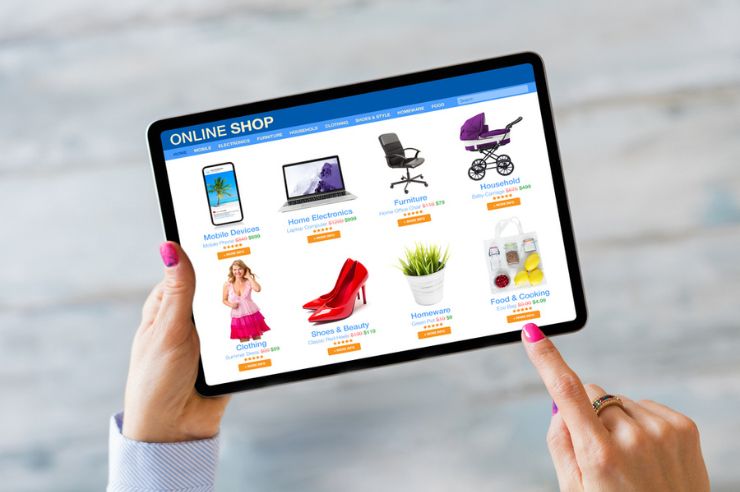Shopify empowers brands to quickly build a user-friendly online store and sell their products on multiple channels. Although millions of merchants use this popular platform, you can differentiate your site and make it unique by leveraging Shopify customization.
While Shopify is not entirely as customizable as WordPress platforms, it gives you plenty of options to create a site that embodies your brand voice. With this in mind, let’s explore how to customize Shopify websites so that you can enhance the user experience, boost revenue, and grow your brand.
Choose Your Theme
The first choice to define your site’s looks will be whether you want to take advantage of a template or start fresh when building your store. Opting to use a template can expedite the creation of your e-commerce store and help you get your site up and running fast. However, templates provide fewer personalization options than custom Shopify themes, so using a template will limit the amount of customization you can add to your site.
For this reason, if you have big plans for your business or want to add advanced functions to your site, utilizing a Shopify custom theme would be a wise decision to give yourself more flexibility. In addition, investing in Shopify custom theme development will allow you to tailor the entire shopping experience based on customer preferences and your business needs.
Customize Your Theme
Once you have decided on a theme, it is time to make it your own. After all, many brands may use the same theme, and you’ll want to make yours unique with your brand colors, fonts, and so on.

However, the number of Shopify custom fields you can manipulate will vary depending on the type of theme that you choose. For instance, if you selected a page builder theme, you can edit and customize your site in the page builder platform. On the other hand, using a framework theme, you can tailor the user experience by selecting child themes. Therefore, using a framework theme is probably the quickest approach to customization, but you are limited to Shopify’s selection of child themes.
The third and most comprehensive approach involves partnering with a developer. They can edit a theme directly, add custom font to Shopify, and incorporate just about any other attribute you can dream up.
Customize Your Products
Now that you have your theme and website attributes figured out, it’s time to customize your products. Again, Shopify gives you lots of freedom to showcase your products in a way that appeals to your target audience. This is one of the most critical aspects of Shopify customization, so ensure you get it right.
Start by carefully entering the price for each product (and ensure that you keep your pricing up to date). After you input the price, upload images or videos so prospective customers can get an idea of your product and why it’s a good purchase. You will also need to provide shipping information, such as what delivery options are available (such as one-day or standard).
The final product customization strategy that Shopify supports is SEO. You can use Shopify customization to boost your visibility on top search engines by optimizing your site structure and incorporating relevant keywords in your product descriptions.
Customize Your Shopify Discounts
Everyone loves a great deal. You know it, and so does Shopify, which is why the platform includes a Shopify customization feature that allows you to create unique discount codes, one of the best ways to customize Shopify stores.
You can generate a new code for each seasonal sale or special product offer that you run. In addition, you can create several discount codes simultaneously, which is useful when working with influencers. Providing each influencer with their code will help you attribute sales and compensate your partners fairly.
Shopify also allows you to reduce prices for a holiday or special event temporarily. But if you want to unlock even more Shopify customization for discounts, you will need to work with a developer. You can implement intricate pricing strategies, like BOGO or 15% off after a customer spends $50. If you have difficulty with the implementation, a developer can assist you.
Add Apps and Integrations
Shopify custom apps are a great way to stand out from the competition. Thankfully, Shopify easily integrates your app into your online store. In addition, custom apps are often simpler and easier to set up than WordPress plugins.
You can use apps for a variety of functions. For instance, you could use your app to showcase your TikTok profile, engage in automatic dropshipping with Alibaba, or streamline the product review process. Obtaining a large volume of product reviews is especially important, as they act as social proof that will entice more people to buy your goods. You can also use your app to distribute discount codes, market to customers, and more.
Customize the Shopify Checkout Process
You can also apply Shopify customizations to make the checkout process simpler or even more personable. Removing friction from the checkout process is a great way to optimize the user experience and drive more sales.

To this end, Shopify offers a solution known as Shop Pay. This accelerated checkout process allows your customers to save details such as their email addresses and billing and shipping information, saving time on future purchases. Customers who sign up for Shop Pay can use the tool on any Shopify store.
In addition to Shop Pay, you can enhance the checkout process by adding new purchase incentives. For example, you could automatically apply free shipping or a discount for first-time buyers.
Working with a Shopify Development Agency
As you can see, there are quite a few out-of-the-box Shopify customization options. However, if you want to create a genuinely one-of-a-kind user experience, you should partner with a Shopify development agency. Doing so will enhance the user experience, bolster revenue, strengthen your brand image, and fuel the growth of your e-commerce store.
To learn more about the benefits of working with a Shopify development agency, explore Oyova’s eCommerce services, such as our Shopify development services.



